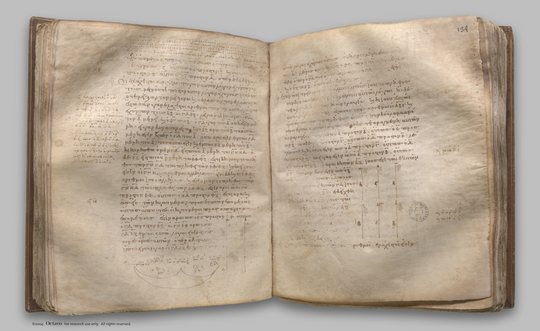index prev next | digilib folio 138

The least numbers of those which have the same ratio with them measure those which have the same ratio the same number of times, the greater the greater and the less the less.
| The least numbers of those which have the same ratio with them measure those which have the same ratio the same number of times, the greater the greater and the less the less. For let CD, EF be the least numbers of those which have the same ratio with A, B; I say that CD measures A the same number of times that EF measures B. Now CD is not parts of A. For, if possible, let it be so; therefore EF is also the same parts of B that CD is of A. [VII. 13 and Def. 20] Therefore, as many parts of A as there are in CD, so many parts of B are there also in EF. Let CD be divided into the parts of A, namely CG, GD, and EF into the parts of B, namely EH, HF; thus the multitude of CG, GD will be equal to the multitude of EH, HF. Now, since the numbers CG, GD are equal to one another, and the numbers EH, HF are also equal to one another, while the multitude of CG, GD is equal to the multitude of EH, HF, therefore, as CG is to EH, so is GD to HF. Therefore also, as one of the antecedents is to one of the consequents, so will all the antecedents be to all the consequents. [VII. 12] Therefore, as CG is to EH, so is CD to EF. Therefore CG, EH are in the same ratio with CD, EF, being less than they: which is impossible, for by hypothesis CD, EF are the least numbers of those which have the same ratio with them. Therefore CD is not parts of A; therefore it is a part of it. [VII. 4] |